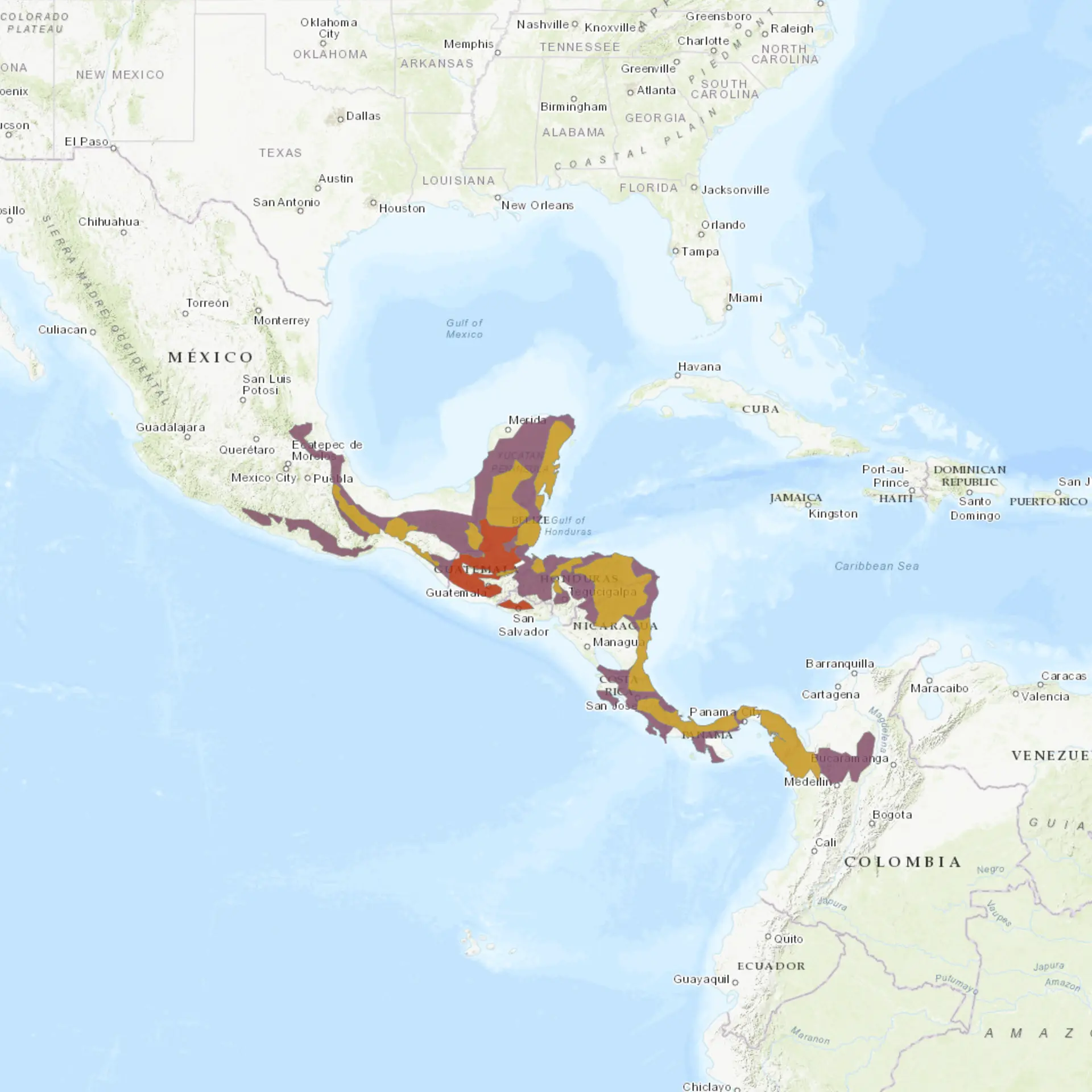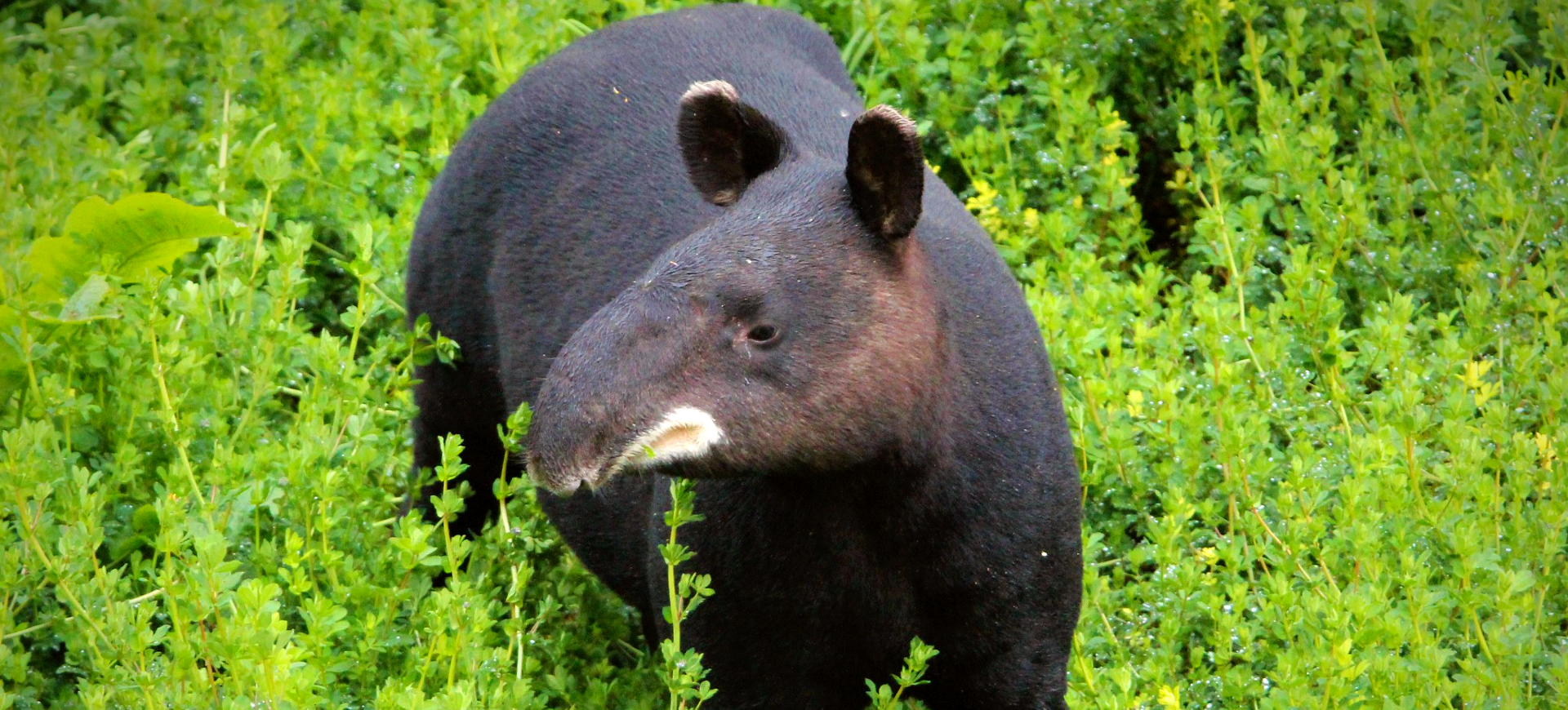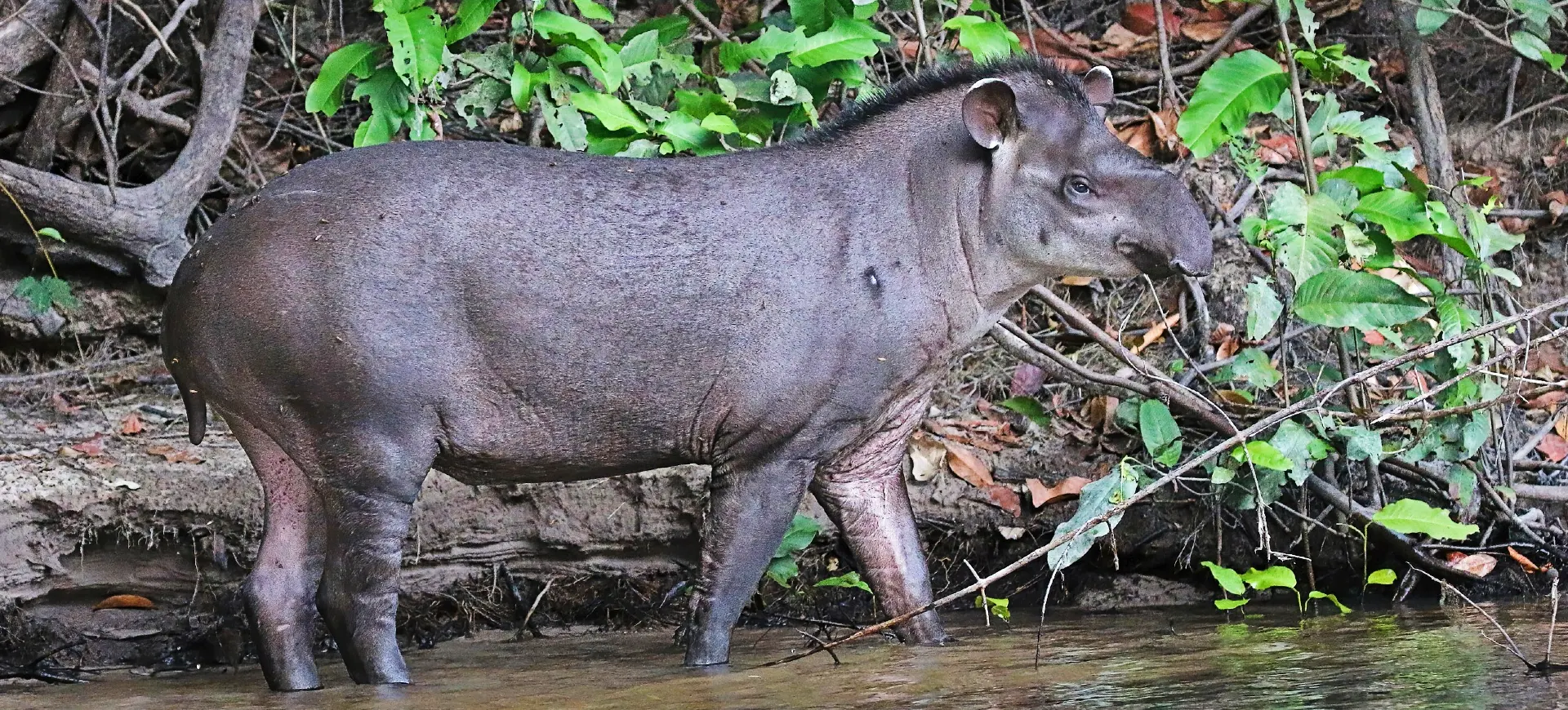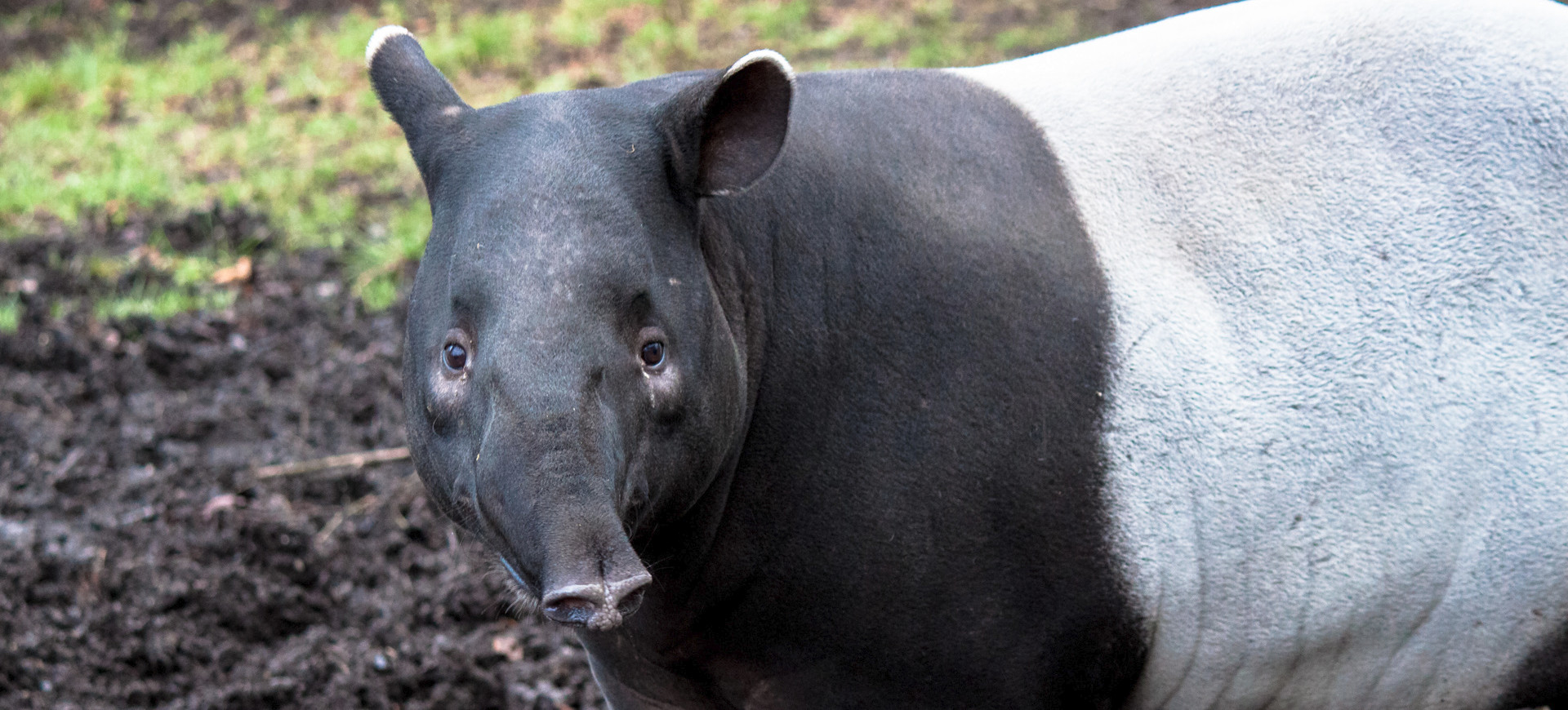Overview
The Baird’s Tapir is a remarkable herbivorous mammal native to various regions of Central and South America, including areas from Southern Mexico to Colombia. Characterized by its unique proboscis, this elongated and flexible snout is a versatile foraging tool. It allows the animal to grasp leaves, fruits, and other types of vegetation with ease. The snout’s talent is to strip leaves from branches and pick up small, fallen fruit from the forest floor.
Physiologically, the Baird’s Tapir is robustly built, with a body designed for durability rather than speed. It has relatively short limbs that bear considerable weight, ranging from 600 to over 800 pounds, depending on the individual and their sex. Despite this seemingly cumbersome build, the animal is surprisingly agile, especially in its natural habitat of dense forests. Its anatomy also enables it to be an adept swimmer, and it frequently seeks solace in water to escape predators like jaguars or forage for aquatic vegetation.
Beyond its physical characteristics and behaviors, the Baird’s Tapir plays a crucial ecological role in its natural habitat. As it moves through the forest, consuming various plant materials, it disperses seeds. This activity is vital for regenerating plant species within the ecosystem, contributing to overall forest health. Seed dispersal by tapirs can even lead to greater plant diversity in their inhabited areas. In this way, Baird’s Tapir is a keystone species, having a disproportionately large impact compared to its abundance in the ecosystem.
Taxonomy
Kingdom
Phylum
Class
Order
Family
Genus
Species
Type
Current distribution:
Baird's Tapirs primarily inhabit the lowland forests of Central America, with their geographical range extending from Southern Mexico down to certain regions of Colombia. These areas offer dense vegetation and proximity to fresh water sources vital for their survival. However, their natural habitat has been increasingly compromised due to factors like deforestation, leading to habitat loss and fragmentation.
Although Baird's Tapirs are elusive creatures and primarily nocturnal in their activities, they still face threats from human activities. They are hunted for their meat and hide, contributing to their declining numbers and exacerbating the challenges they already face from habitat destruction. These combined factors put them in a precarious position and underscore the urgent need for conservation efforts.
Physical Description:
The Baird’s Tapir is distinctively covered in a thick, brown hide that can sometimes exhibit shades of gray or red. This hide serves as protection, offering some degree of insulation and safeguarding against minor abrasions as it moves through its natural habitat. Additionally, it has a short, prehensile snout and an elongation of its upper lip and nose, a crucial tool for feeding and foraging.
The animal’s ears are notably large and rounded, providing heightened auditory senses essential for detecting potential predators or other environmental cues. Its eyes, in contrast, are relatively small, reflecting its primarily nocturnal lifestyle. The Baird’s Tapir’s limbs are stout but highly functional, enabling it to navigate terrestrial and aquatic environments effectively.

Lifespan: Wild: ~25 Years || Captivity: ~35 Years

Weight: Male: 660–880 lbs (299–399 kg) || Female: 600–770 lbs (272–349 kg

Length: Male: 72–94 in (182–239 cm) || Female: 70–88 in (178–224 cm)

Height: Male: 30–40 in (76–101 cm) || Female: 28–37 in (71–94 cm)

Top Speed: 30 mph (48 km/h)
Characteristic:
Native Habitat:
Baird’s Tapirs are predominantly found in tropical rainforests near rivers or other freshwater bodies. The proximity to water sources fulfills their hydration needs and provides additional foraging opportunities, particularly in aquatic vegetation. The dense forests serve as an ideal environment, offering ample cover from predators and a diverse range of plant material for their diet.
In addition to tropical rainforests, Baird’s Tapirs are also known to inhabit cloud forests. These environments have cooler temperatures and higher altitudes, yet they still provide a variety of vegetation suitable for the tapirs’ herbivorous diet. The different climatic conditions of cloud forests offer another set of challenges and advantages but ultimately support Baird’s Tapirs’ flexible and adaptable nature.
Climate Zones:
Biogeographical Realms:
Continents:
Diet:
Diet & Feeding Habits:
Baird’s Tapirs primarily sustain themselves on a herbivorous diet consisting of various plant materials such as leaves, twigs, and fruits. When opportunities arise, they consume aquatic vegetation, adding variety and nutrients to their diet. The tapirs’ preference for fibrous plant material aids digestion and meets their nutritional needs, making them well-adapted to their natural habitats.
These animals are generally nocturnal foragers, a behavior that reduces their visibility to predators and enhances their chances of survival. They employ their unique, prehensile snout to grasp and manipulate food items, allowing them greater access to resources that might be unattainable to other herbivores in their ecosystem. This specialized feeding technique broadens their dietary scope and affords them a competitive advantage in their natural environment.
Mating Behavior:
Mating Description:
Baird’s Tapirs are generally solitary creatures, tending to live and forage alone except during the mating season. During this time, males actively seek out females and employ a series of vocalizations and specific behaviors to attract a mate. These may include snorts, whistles, and even physical displays to catch the attention of a potential female partner.
Once a mating pair is established, copulation may occur multiple times to ensure the female conceives. The gestation period for Baird’s Tapirs is quite long, lasting around 13 months. Following this period, the female typically gives birth to a single offspring, although twins are not entirely unheard of. This solitary offspring represents a significant investment of resources and care from the mother, emphasizing the importance of each birth for the conservation of the species.
Reproduction Season:
Birth Type:
Pregnancy Duration:
Female Name:
Male Name:
Baby Name:
Social Structure Description:
Baird’s Tapirs are predominantly solitary by nature, seldom forming social groups and typically living in isolation except during mating seasons. They have a very loose social structure, with each tapir operating primarily independently rather than in a collective group. These tapirs utilize scent glands on their cheeks and feet to mark their territories, serving as chemical communication to other tapirs in the area.
Social interactions among Baird’s Tapirs are most commonly observed during the mating season, where vocalizations and physical behaviors are employed to attract and secure a mate. Outside of this period, the most frequent social interaction occurs between a mother and her calf, particularly during the lengthy period of juvenile dependency. These interactions are crucial for the young tapir’s survival and development, as the mother provides sustenance and educational experiences.
Groups:
Conservation Status:
Population Trend:
The Baird’s Tapir faces a grim outlook regarding population sustainability, primarily due to hunting, habitat loss, and fragmentation. These threats have led to declining numbers, resulting in the species officially being Endangered by the International Union for Conservation of Nature (IUCN). The current populations are increasingly fragmented, consisting of several small and isolated groups that face ongoing challenges to their survival.
In response to these alarming trends, various conservation programs are actively working to protect the Baird’s Tapir. These initiatives primarily focus on habitat conservation, aiming to safeguard the vital environments in which these animals live. Additionally, efforts are being made to reduce hunting pressures on the species through legal protections and community education to raise awareness about the tapir’s endangered status.
Population Threats:
The predominant threats to the Baird’s Tapir are habitat loss and hunting. The encroachment of agriculture and human settlement into their natural habitats significantly reduces the available area where these animals can live and forage. Furthermore, they are often hunted for meat and hide, adding to the pressures driving their decline.
Other risks that Baird’s Tapirs face include vehicle collisions and disease. Roads that cut through their natural habitats pose a risk of vehicle-related injuries or fatalities as these animals try to cross. Additionally, they are susceptible to diseases that can be transmitted by domestic animals, adding another layer of threat to their already precarious situation.
Conservation Efforts:
Several conservation programs are in place to help protect the Baird’s Tapir, each employing a different strategy to combat the threats these animals face. One of the primary focuses is on habitat restoration, which aims to rebuild and preserve the natural environments crucial for the species’ survival. Legal measures have also been enacted to protect Baird’s Tapirs from hunting, providing another layer of safety for these endangered animals.
Community-based conservation is another angle from which conservationists work to protect Baird’s Tapirs. Educational initiatives targeting local populations aim to raise awareness about the importance of the species to overall biodiversity. In addition to these in situ conservation efforts, ex-situ strategies such as zoos and captive breeding programs play a role by contributing to the gene pool and offering scientific study and observation opportunities.
Additional Resources:
Fun Facts
- Baird’s Tapirs are excellent swimmers.
- They have been known to live up to 35 years in captivity.
- The prehensile snout is used for grasping food and sniffing out predators.
- Despite their bulky size, they are agile and can run fast when threatened.
- They can consume up to 75 pounds of food per day.
- Baird’s Tapirs are considered a “gardener” of the forest due to their role in seed dispersal.
- The species is named after American naturalist Spencer Fullerton Baird.
- They have a keen sense of smell and hearing but poor eyesight.
- The calves have a striped and spotted coat for camouflage.
- They are known for their high-pitched whistling calls.













